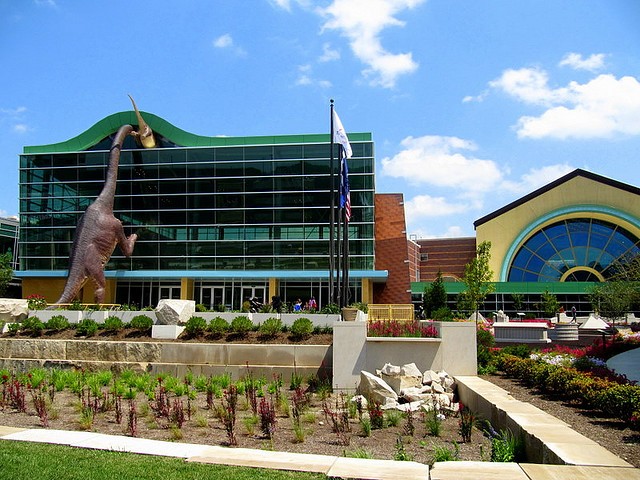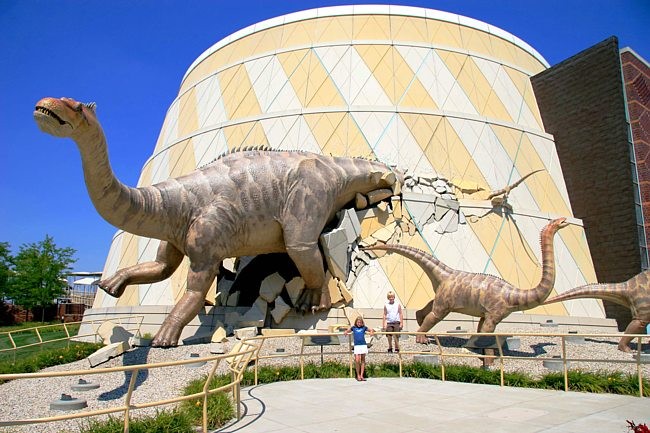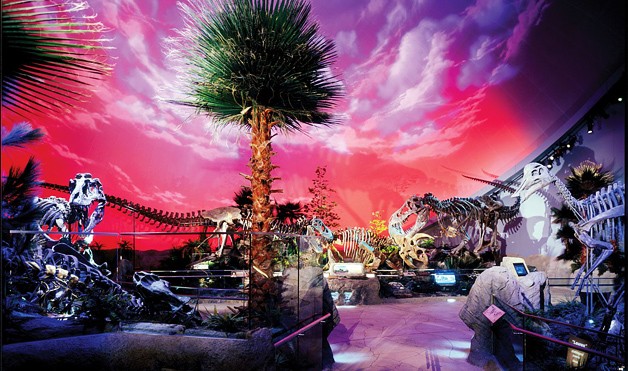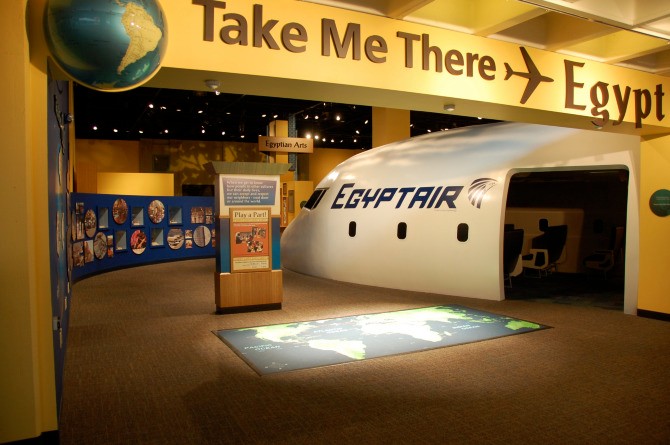This entry includes a walking tour! Take the tour.
Introduction
Text-to-speech Audio
Images
Front entrance of the Children's Museum of Indianapolis

Another view of the museum exterior

Dinosaur skeletons in the Dinosphere exhibit

Take Me There: Egypt Exhibit

Exterior panoramic photo of the museum

Backstory and Context
Text-to-speech Audio
History of the Children's Museum of Indianapolis
The history of the Children’s Museum of Indianapolis traces back to prominent civic leader and owner of the Stewart-Carey Glass Company, Mary Stewart Carey. In 1924, a year before the Children’s Museum opened to the public, Mary visited the Brooklyn Children’s Museum, which many attributed as her inspiration for the Indianapolis children's museum.
At the time, there were only three children’s museums in the United States, including the Brooklyn Museum, the Boston Children’s Museum, and the Detroit Children’s Museum. By 1925, Mary Stewart Carey was advocating for an Indianapolis museum, which led to the formation of the Children’s Museum Association of Indianapolis.
In the museum’s early years, however, the Indianapolis association didn’t have money nor access to prominent collectors. To build a collection, Carey and other members of the Association’s board asked around the Indianapolis community for donations. On the museum’s opening day in 1925, the Children’s Museum of Indianapolis displayed 600 objects that it had collected from the community.
In the museum’s first year, when it was located in the Carriage House at the Propylaeum, it experienced several difficulties and setbacks, such as an inability to pay the rent and bills. The Great Depression in the 1930s didn’t help the museum’s mission as well, but visits from First Lady Eleanor Roosevelt and architectural designs from Kurt Vonnegut Sr. (father of the famous writer) helped boost the museum’s prominence.
By 1942, the museum’s framework for future growth was set. Under the leadership of Grace Golden, the museum was able to acquire a large variety of Native American artifacts in 1947, a gallery of dinosaur skeletons in 1949, and a 19th century log cabin in 1961, among many others. By 1973, a widespread fundraising campaign raised upwards of $8.7 million for the museum’s new building. Five years later, the museum’s current building was finished, and its collections and exhibits continued to grow throughout the 20th century.1
Museum Exhibits
The Children’s Museum of Indianapolis remains highly praised for its variety of interactive and hands-on exhibits. Spread throughout the museum’s 5 floors and 29 acre facility space, 18 permanent exhibits focus on the arts, sciences and humanities.
One of the most popular exhibits is the Dinosphere, which allows children to come face-to-face with full-sized dinosaur skeletons. The ScienceWorks exhibit lets children roll up their sleeves and enjoy a multitude of scientific discoveries, such as looking for frogs in a freshwater ecosystem, exploring buoyancy and surface tension in a 30-foot winding creek, or learning how plants can change the world.
Other exhibits include “Take Me There: China,” the “SpaceQuest Planetarium,” “Power of Children,” the “Lilly Theater,” “Treasures of the Earth,” and many others.2
Sources
1.) "The History of the Museum By Chapter," The Children's Museum of Indianapolis, accessed July 31, http://thehistory.childrensmuseum.org/timeline 2.) "Exhibits," The Children's Museum of Indianapolis, accessed July 31, https://www.childrensmuseum.org/exhibits
"The 10 best children's Museums". Parents magazine.
Wolf, Barbara; Wood, Elizabeth (Spring 2012). "Integrating Scaffolding Experiences for the Youngest Visitors in Museums" (PDF). Journal of Museum Education. Museum Education Roundtable. 37 (1): 31–32.
